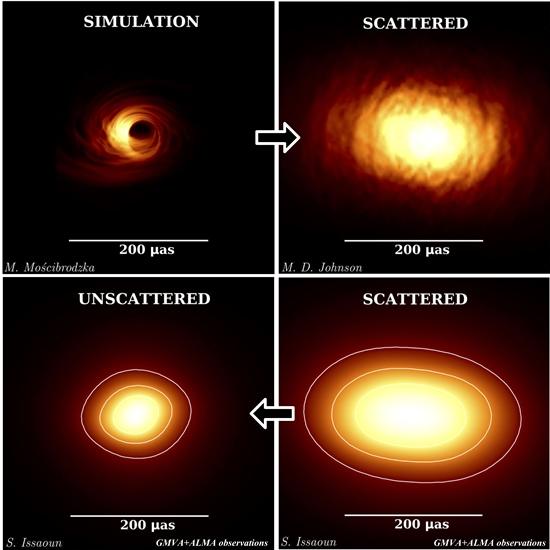
Including the powerful ALMA into an array of telescopes for the first time, astronomers have found that the emission from the supermassive black hole Sagittarius A* (Sgr A*) at the center of our Galaxy comes from a smaller region than previously thought. This may indicate that a radio jet from Sgr A* is pointed almost toward us. The paper, led by the Nijmegen PhD student Sara Issaoun, is published in The Astrophysical Journal.
Observing at a frequency of 86 GHz with the technique of Very Long Baseline Interferometry (VLBI), which combines many telescopes to form a virtual telescope the size of the Earth, the team succeeded in mapping out the exact properties of the light scattering blocking our view of Sgr A*. The removal of most of the scattering effects has produced a first image of the surroundings of the black hole. The new images show that the radiation from Sgr A* has a symmetrical morphology and is smaller than expected – it spans a mere 300 millionth of a degree.

Find more about these new results based on Sgr A* observations with a global VLBI array at the frequency of 86 GHz in these press releases from:
- Radboud University
- Max Planck Institute for Radioastronomy [in German]
- Harvard-Smithsonian Center for Astrophysics
